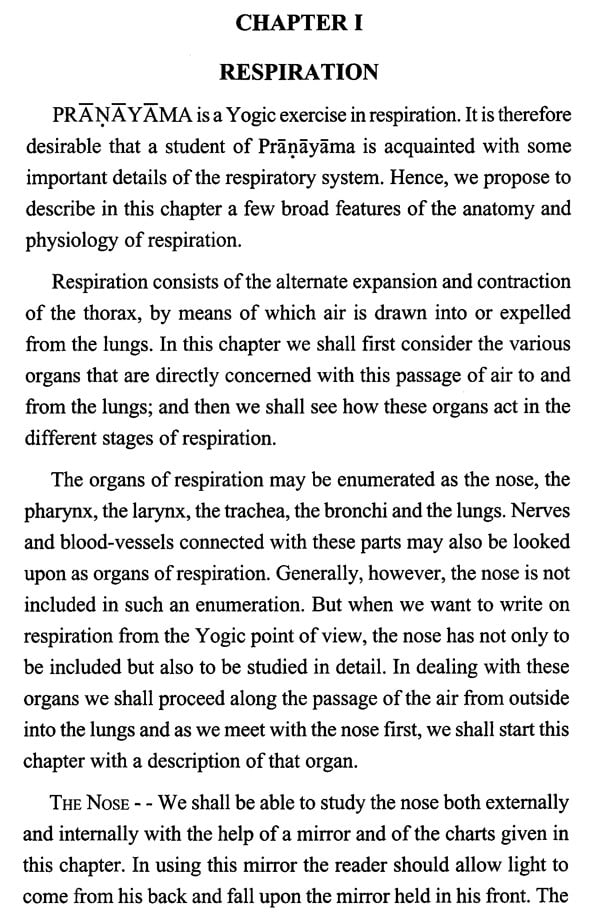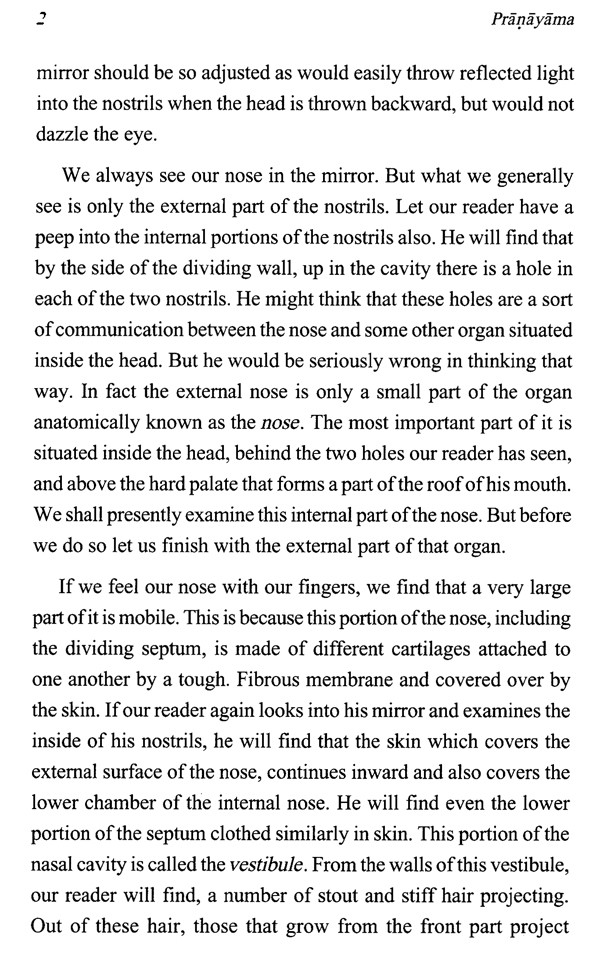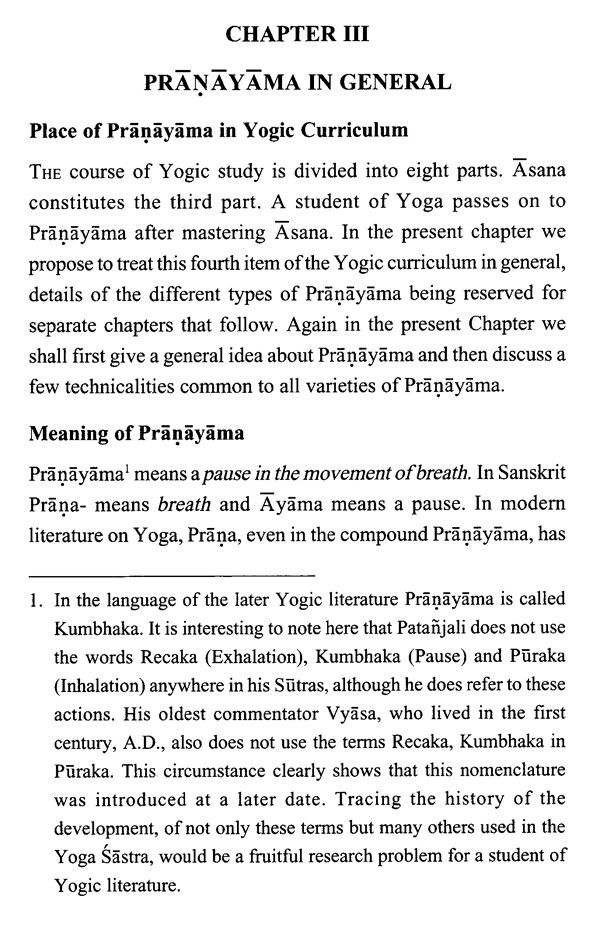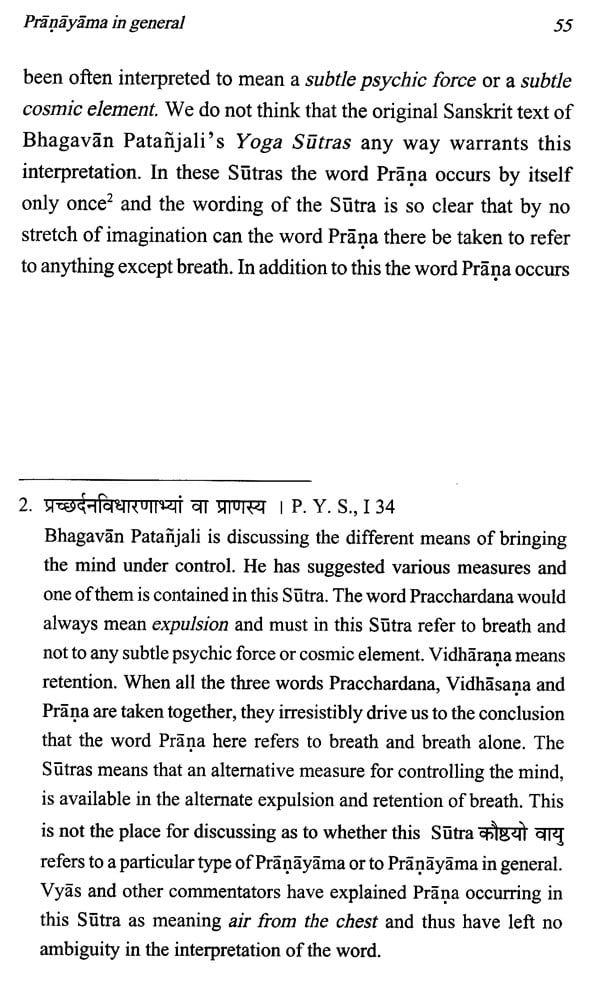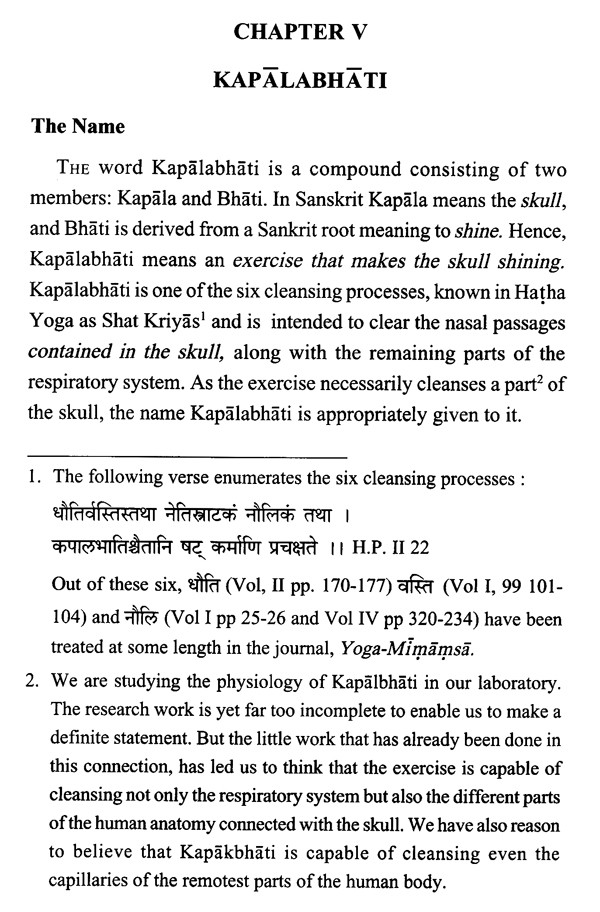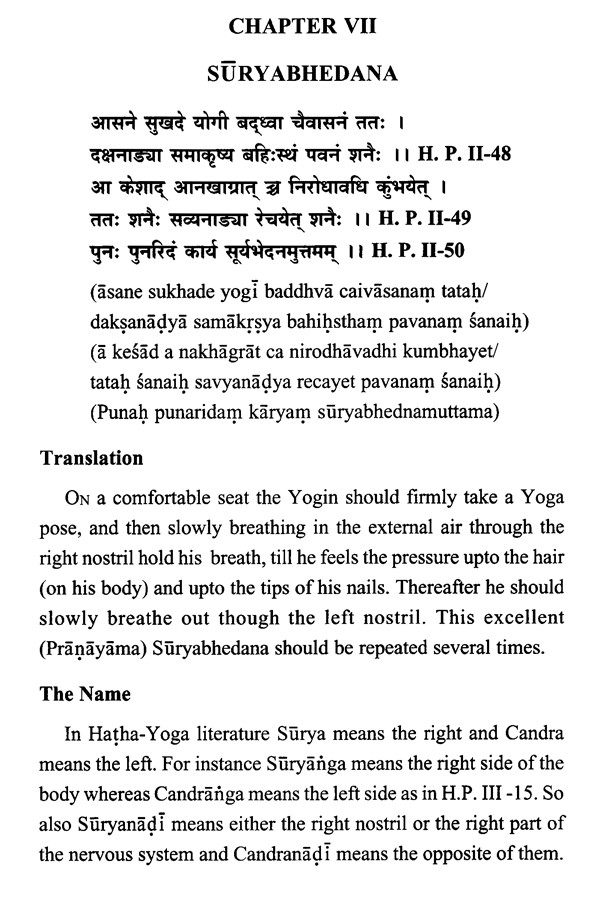
Pranayama
Book Specification
| Item Code: | IDF108 |
| Author: | Swami Kuvalayananda |
| Publisher: | Kaivalyadhama Samiti Lonavla |
| Language: | English |
| Edition: | 2020 |
| ISBN: | 8190280368 |
| Pages: | 212 (B & W Illus: 43) |
| Cover: | Paperback |
| Other Details | 8.5" X 5.5" |
| Weight | 220 gm |
Book Description
ASANAS
By Swami Kuvalayananda
Asanas, a popular handbook of yogic exercises gives a detailed description of the techniques of nearly every Asana. To make the description easily understandable each Asanas has been fully illustrated. It also gives a comprehensive idea of all the functional advantages of the Asanas along sound scientific lines. Cultural and therapeutical advantages of different practices have been indicated. It is reliable, competent and practical guide for Easy, Short and Full courses of Yogic Physical Culture framed by Swami Kuvalyananda at scientific study has proved the beneficial effect these yoga practices. Kaivalyananda, the renowned Yogic Research Institute.
It is after fifteen years that we are presenting to the public our handbook of Pranayama. No doubt, in the meanwhile we published Pranayama Part Two, in 1958. But the Pranayama Part Two although containing six varieties of Pranayama that had not been included in Part one and also giving very valuable articles on the subject of Pranayama, could not present the subject of Pranayama in its proper perspective. Thus the public remained starved of Pranayamic food for a very long time. During all these years the demand for a tolerably complete handbook on this subject continued.
Now we have great pleasure in presenting this very comprehensive handbook on the subject of Pranayama and we are sure it will receive the same appreciation and patronage from the public that our publications have been receiving for the last four decades. In the present handbook we have included all the eight varieties of Pranayama that are advocated by the authors of Hatha-Yoga, with a somewhat cursory reference to the four varieties of that subject as taught by Patanjali. The lengthy article on ‘Respiration’ and also an article on the ‘Physiological and Spiritual Values of Pranayama’ which form an important part of the subject as they provided an essential background for clearly understanding it, but which did not appear in Part Two, have been retained. Thus we have tried our best to make the present handbook of Pranayama as comprehensive as possible. We must, however, make it clear to our readers that though his handbook is complete in itself, it is no substitute for our quarterly journal Yoga Mimamsa, because that journal contains vast scientific information in the form of actual Laboratory experiments and also many articles on Pranayama. This information could not be included in this handbook because of its limited scope and also because of the type of readers for whom it is intended. Some of the articles which had appeared in Pranayama Part Two and which were borrowed from Yoga –Mimamsa have also been omitted here. These omissions, however, will not come in the way of our readers’ understanding the subject in its basic form.
The great importance of the practice of Pranayama is clearly brought out in the last Chapter of this handbook but the treatment of the subject is from the modem point of view. Hence it was thought desirable to note here something that our ancient authors have said about Pranayamic values, both physiological and spiritual.
Manu, one of the greatest ancient law-givers, observes that Pranayama is a specific remedy against the evil tendency of the mind and the sense organs)2 Kulluka commenting on these observations explains the evil tendencies of the mind as ‘Love and Hatred’; and the evil tendencies of the sense organs as the attractions of these organs towards the external objects. These natural tendencies of the mind and the sense organs are condemned as evil because success in Yoga depends upon the introversion of the mind and the sense organs. A similar view is expressed by the author of Hatha Pradipikä4 saying that some Yoga experts were of the same opinion, that is they considered Pranayamic alone would be sufficient to overcome the evil tendencies of the mind and sense organs.
Patanjali the greatest exponent of Yoga Sastra gives in his two sutras namely II, 52 and 53 a clear exposition of the spiritual values of Pranayama. The spiritual development of a student of Yoga depends upon two things. First he must eliminate the factor that obscures the spiritual light and secondly he must be able to fix his wandering mind. According to Patanjali a student of Yoga to able to make a beginning in boeth these directions by practicing Pranayama.
Thus far we have taken notice of the importance of Pranayama from the point of view of the ancient authors of the subject of Yoga. We had to touch this point her as it was discusses either in Part One or Part Two of Pranayama previously published.
Now we shall indicate some additional features about the present handbook.
As usual we have very rightly illustrated the subject that is under discussion in this handbook. Every effort is made to make the handbook thoroughly instructive as well as interesting.
Cautions have been pronounced at every step making the text book a reliable and sage guide for a practical student of Pranayama. Inspite of this fact we would strongly advise everyone first to get himself trained under an expert, if possible and then take up this handbook for guidance.
Three important appendices have been attached to this handbook. The general hints contained therein have been based upon out clinical experience at the Asrama. The insertion of these appendices in this handbook is intended to make it thoroughly useful to the practical student of Yoga.
The glossary very tersely gives anatomical and physiological information which has been detailed in Yoga Mimamsa it will however serve as a valuable guide to a practical student of Yoga and will make him independent of any text book of anatomy and physiology.
From what has been said upto now in this preface this handbook can be called to be the fourth impression of Pranayama because the largest part of its is taken from Part One although it contains some chapters borrowed form part two.
The present handbook of Pranayama owes its publication to Messrs. Popular Prakashan of Bombay. They have spared no pains to make it as attractive instructive and helpful as possible. This firm of publishers has already put in the market out handbook of Asanas. Out best thanks are due to them for having undertaken to publish our writing simply for the love of our ancient culture interpreted in the light of modern science and though.
We have no words to express adequately our gratitude to our readers. They have taken very sympathetically to whatever we have written on the science and practice of Yoga inspite of many a shortcomings for which these writings suffer.
We cannot close this short preface without mentioning a word about our service to Yoga. Our personal share in this service is very small. The overwhelmingly largest share belongs to our Asramite brothers. They are highly qualified university men most disinterestedly devoted tot eh cause of yoga. Even those brothers who have no university qualification are men of sublime culture and have given decades of their precious life to the cause of Yoga. May god bless them all!.
| Chapter | Page | |
| Preface | v-ix | |
| I. | Respiration | 1 |
| II. | Asanas Appropriate to Pranayama | 26 |
| III. | Pranayama in General | 40 |
| IV. | Ujjayi | 61 |
| V. | Kapalabhati | 71 |
| VI. | Bhastrika | 90 |
| VII. | Suryabhedana | 103 |
| VIII. | Sitkari | 107 |
| IX. | Sitali | 110 |
| X. | Bhramari | 112 |
| XI. | Murccha | 116 |
| XII. | Plavini | 118 |
| XIII. | Physiological and Spiritual Values of Pranayama | 121 |
| Appendix I | 132 | |
| Appendix II | 140 | |
| Appendix III | 142 | |
| Glossary | 143 |
